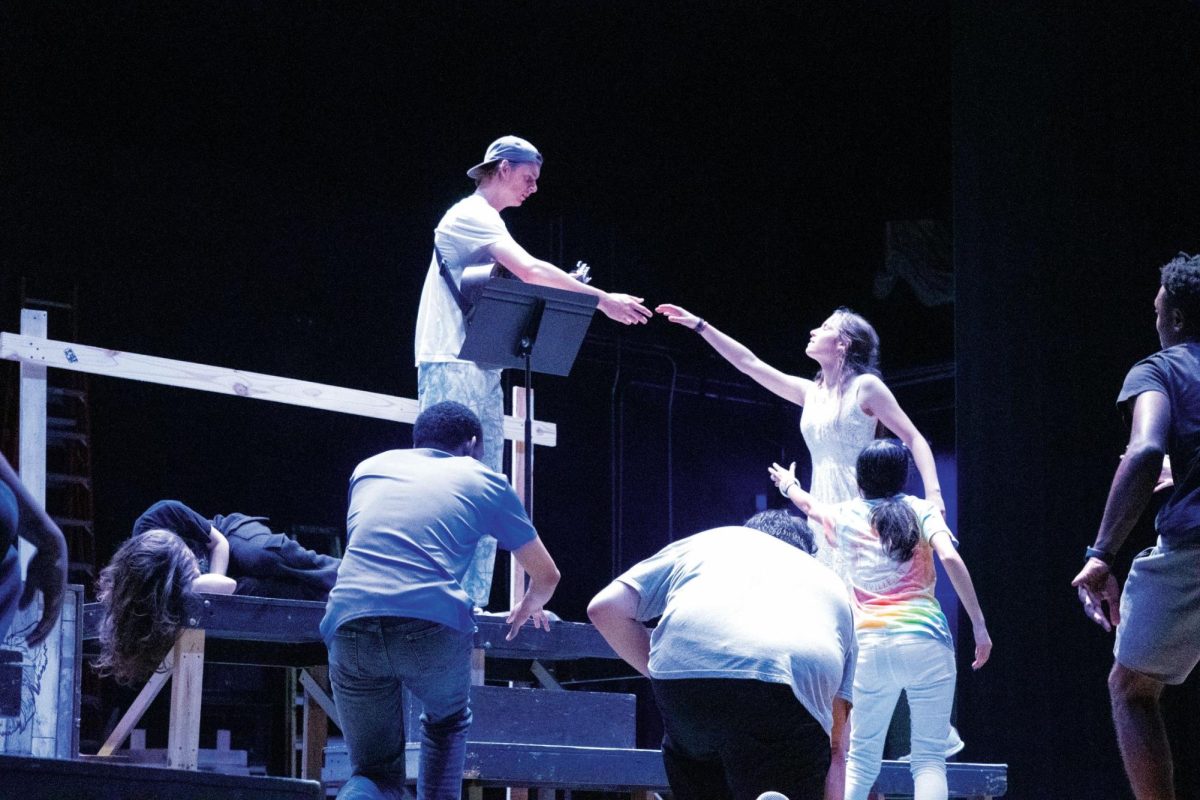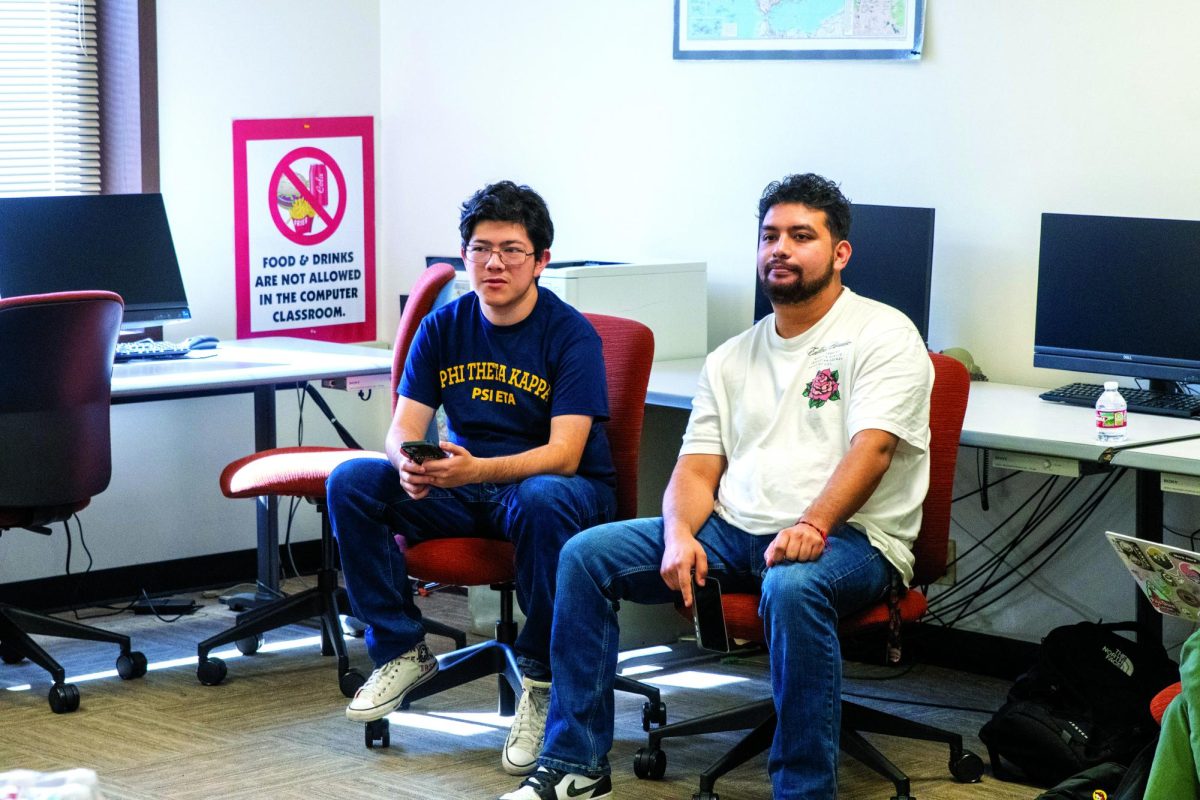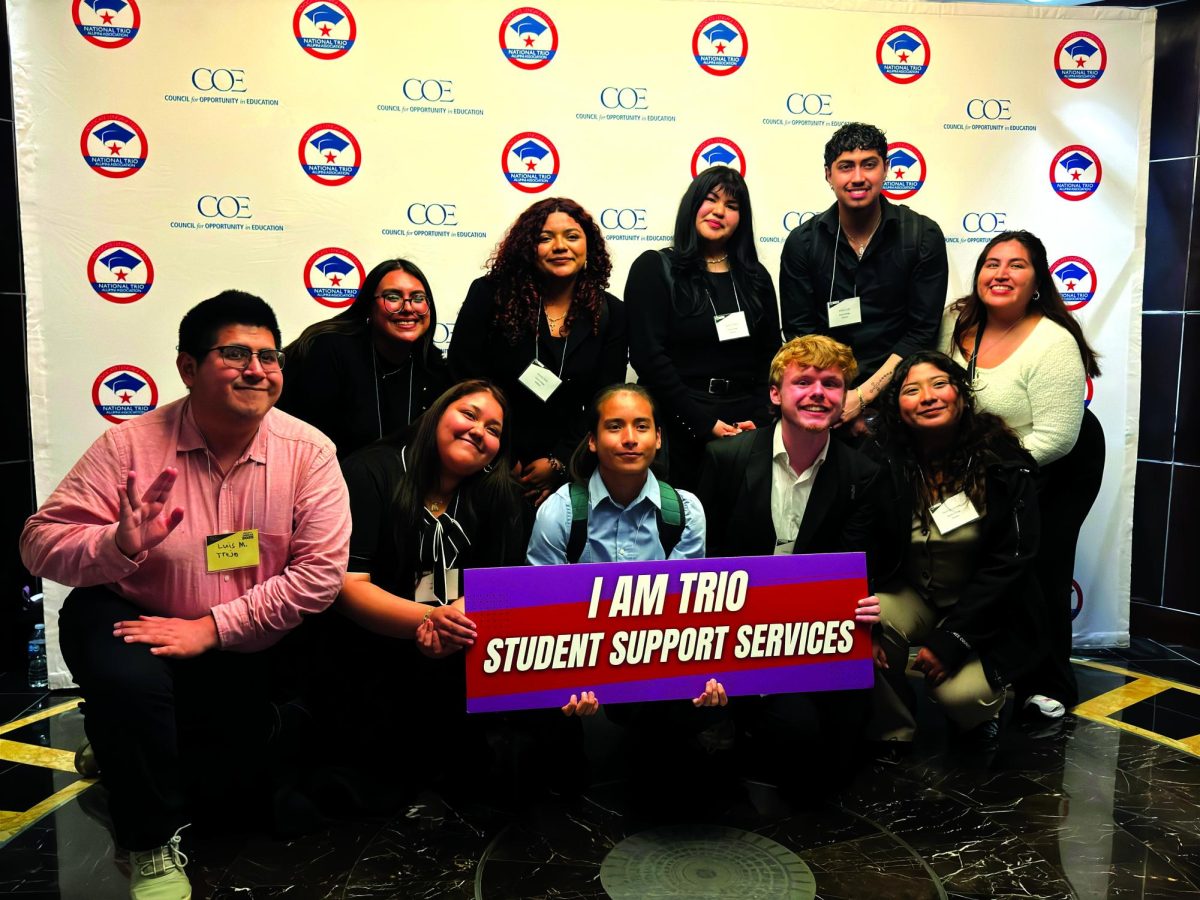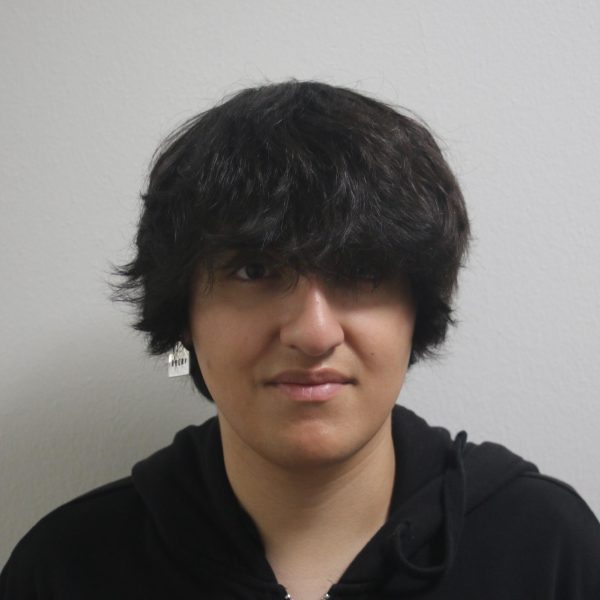“We had this event scheduled for 3.6 billion years,” geologist instructor Daniel Murphy said. “Good thing we didn’t miss it.”
A once-in-a-lifetime total solar eclipse passed over Dallas College today, attracting the campus and its neighboring communities onto the soccer fields. Hundreds gathered on Eastfield’s soccer field to witness the celestial highlight.
People started showing up on the soccer field as early as two hours before the event, with dozens more arriving on the cusp of totality. Isolated pockets of students grouped around campus courtyards as well.
“I’ve been looking forward to this for a long time,” Murphy said. “I went up [north] for one and that was incredible, but it was only a minute of darkness.”
Eastfield was in the moon’s shadow for four minutes, putting the area above local averages of three minutes or less. The community broke out to the sight of 100% totality — the moon completely blocked the sun, creating nighttime conditions and temperatures,
Planning for the event started as early as August 2023, and the subsequent partial eclipse served as “test run,” said physics instructor Uma Choppali.
“Funding for this came from the physics budget, but this isn’t a STEM event,” Murphy said. “It’s a human event.”
In the moments leading up to the 1:40 totality mark, the entire soccer field erupted into a countdown – culminating into cheers and cries once the moon eclipsed the sun.
Nighttime came, eerie silence followed. The air picked up and broke the sudden quiet. When light peeked over the moon again, birds broke out into chirps, making their presence known throughout the more forested parts of Eastfield.
“There’s the Grand Canyon, but pictures don’t really capture it,” Murphy said. “This is one of those things.”
Excitement carried over the horizon. Fireworks and car horns boomed in the distance as well.
The campus community cursed, cheered and some even cried, unable to take their eyes off the diamond ring formed around the moon.
“Even if it’s cloudy, we get to see it,” Choppali said.
Concerns about cloudy weather came into fruition when an overcast covered the sun too close to totality. Forecasts predicted near-total coverage in some areas. Fortunately, the skies cleared last-minute.
“There’s always a break in the clouds,” Vinu Johnson, physics department chair, said. “We had a window when everything cleared, and everyone was happy to see.”
For many, the eclipse was special for how convenient it was – a sentiment shared as several cities intersected the path of totality.
“If you want to see another one of these, you’re going to have to go somewhere,” Murphy said. “It’ll be another 30 years or so until we get another in America, but if you want to stay right here, you’ll have to be immortal.”
The next stars will align for another total eclipse won’t be until 2375.










